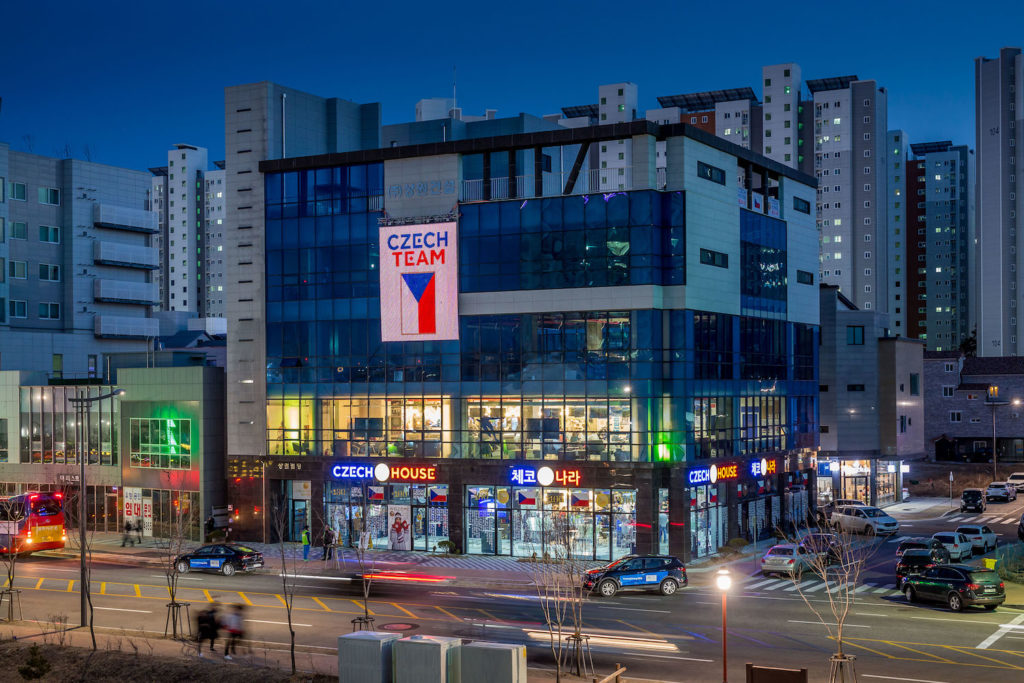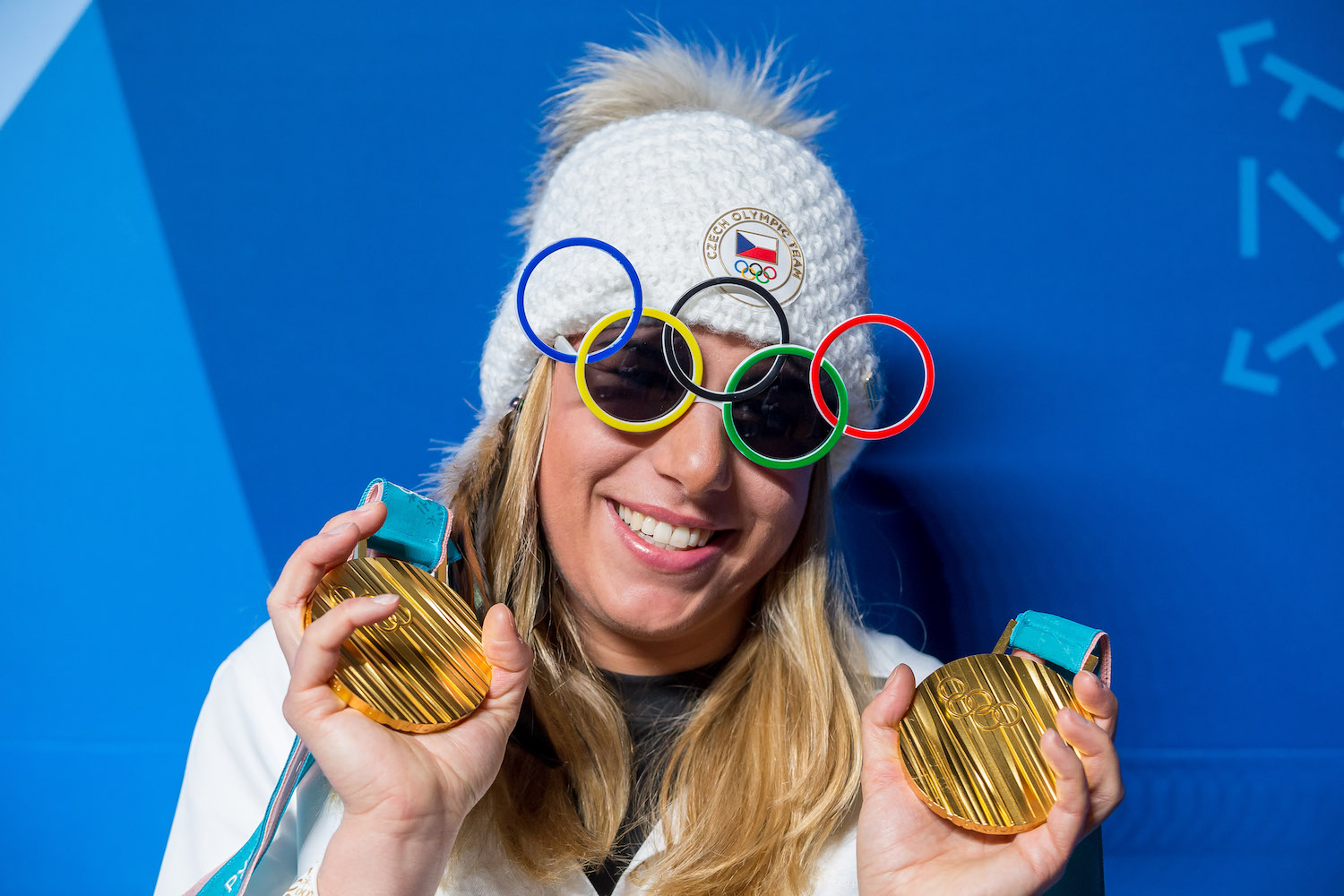The doors here are rarely still; in addition to Czechs, you will rub shoulders with Canadians, Americans, Dutch, Slovenians, Koreans, Slovaks, Swedes and Poles. Every now and then a visitor arrives who has more on his mind than just spending a pleasant moment in a Czech environment. Journalists from the Boston Globe rated the individual national Olympic houses in Korea. They sampled Czech beer, a sausage and a goulash, and they were certain: the Czech House was the best. The Czechs will therefore be heading home with another gold, even though this one is not from the sporting arena. The Swiss were second and the Koreans third.
The Czech House “sprang up” directly opposite the Olympic Village in the coastal town of Gangneung, where the ice hockey and skating events take place. Visitors can sup beer at the bar or go on a virtual tour of the brewery. At the end you meet with barman Jan, who if you’re lucky you can also meet in person.
The beer is flowing freely
So far around 6,000 litres of draught beer have been pulled here, and several Olympians from other nations have visited to sample it. For example, Yulia Evgenievna Galysheva of Kazakhstan, who won bronze in the Moguls. The House was also visited by Scott Moir, who with his partner won gold in the ice dance event, and the professional ice hockey team in Soul coached by Patrik Martinec. “It is great news – a medal for all the months of preparation that has gone into this project. I am personally very happy, and for the whole team that helps with the daily running of the house,” said Blanka Konečná, Manager of the Czech House. “I should also mention the volunteers that have helped us, some flying half way across the world to be part of this.”

The preparation work started almost immediately after the end of the Rio Olympics. “We searched out a venue for the Czech House. After several changes the final decision was taken in April 2017, with the main benefit being the location of the building immediately adjacent to the Olympic Village,” explained Konečná. “It was a newly constructed building without the sub-division and standard layout that we are used to in Europe. We therefore had to devise the most effective arrangement with partitions, where it was necessary to have water connections, to add false ceilings etc. This, along with distance and the language barrier, was probably the biggest challenge.”
Direct view through the window
From the Olympic Village athletes can look directly into the Czech House window. “It’s great that we are just across the road and can come here often,” said figure skater Martin Bidař, and his skating partner, Anna Dušková, added: “The top floor is cosy, and below they are serving Czech beer. In addition, there are lots of pictures here of our country and monuments; it is clear at first sight that it is the Czech House.”

The Czech House also gives space to tourist information, and unbelievably creative glass sculptures that celebrate the artistry of winter sports and help to evoke a festive atmosphere. Also commemorated are the hundredth anniversary of the establishment of Czechoslovakia, the first Czech Winter Olympic gold medal and twenty years since the ice hockey triumph in Nagano. “It’s a real hit! For the presentation of the Czech Republic it’s fantastic,” said bobsledder, Dominik Dvořák.
The Czech House project has been operating at Olympic Games since Barcelona 1992, but for most of this time they were closed to the public. A Czech House was first opened to the public at London 2012, which was visited by 80 thousand people. “We set up the house primarily for athletes; a place they can enjoy visiting, and that helps them enjoy their stay at the Games,“ said Jiří Kejval, President of the Czech Olympic Committee.
The journalists from the Boston Globe ended their report with a sentence that says it all: It was packed, with good reason…

 CZ
CZ EN
EN






